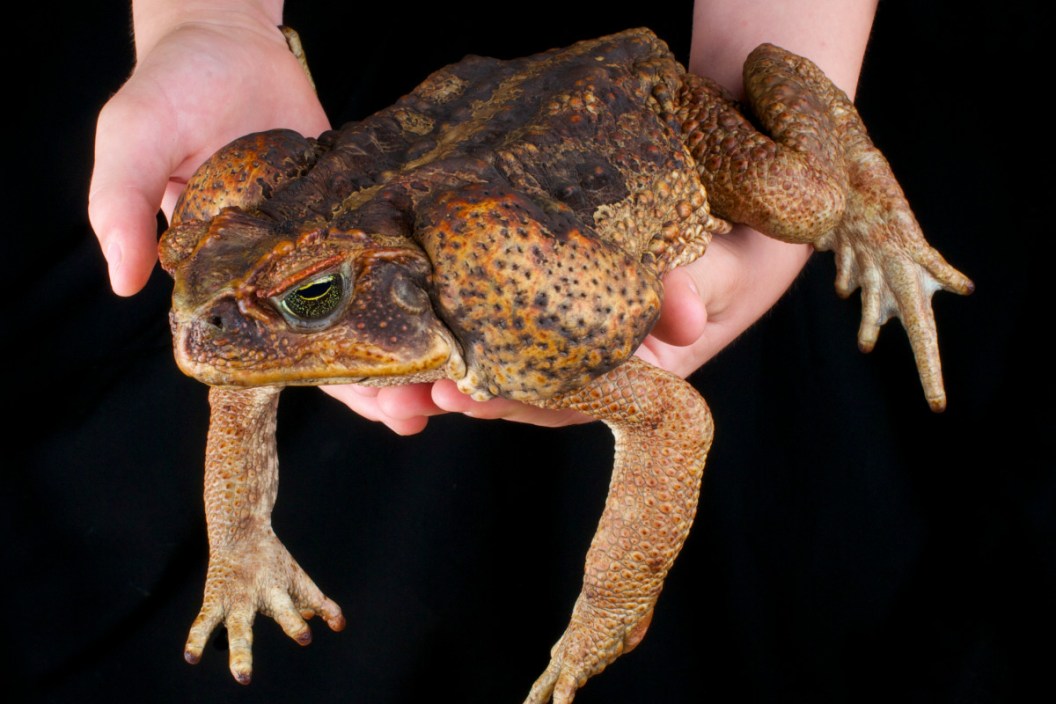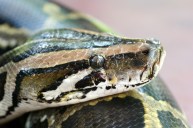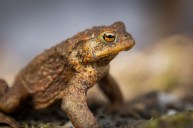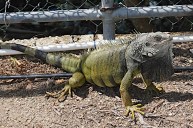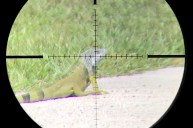Florida has become a veritable hotbed for invasive species in the last few decades. The highly invasive cane toad—also known as the marine toad, or "bufo toad"—has been on the radar of the Florida Fish and Wildlife Conservation Commission more often these days, and not just because of the threat it poses to the ecosystem. Cane toads compete with and even prey upon native species, but pet owners are the ones who really need to worry about these large amphibians—cane toads are highly poisonous and can kill domestic cats and dogs that ingest them. To make matters worse, these toxic toads are deadly their whole lives, even as tadpoles. In humans, the poison can even cause severe skin and eye irritation. Knowing how to tell them apart from the native toads hopping around the Sunshine state is half the battle. Once you know how to identify them, they are easy to pick out, and are easily caught and euthanized for the safety of both humans and other animals.
Where Did Cane Toads Come From?
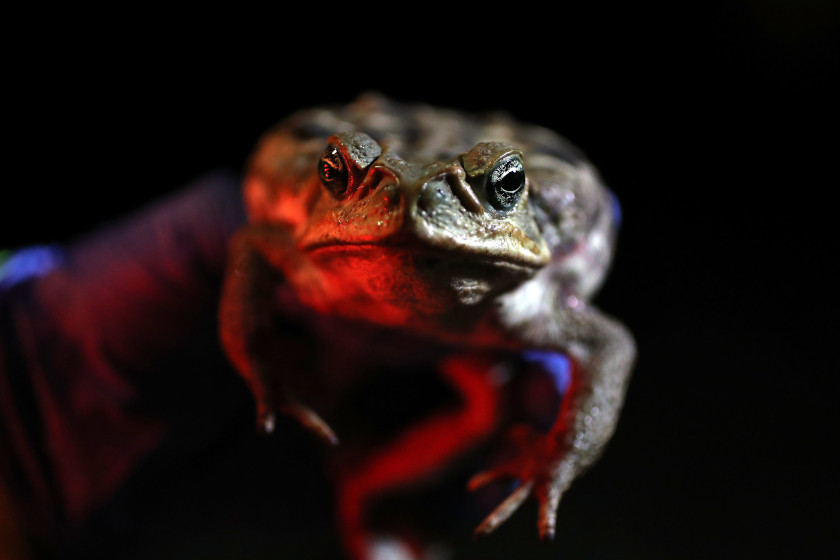
Joe Raedle via Getty Images
According to the FWC, the first cane toads arrived in Florida back in the 1930s and 1940s. Originally native to Central America and South America, farmers brought the big toads in to help combat pests in their sugar cane. While this was done with the best of intentions, many invasive species stories start the same way—creatures released for one problem usually end up causing another.
There were additional imports of the giant amphibians in the 50s and 60s, and the FWC believes releases of them, as well as escapes, are likely contributors to Florida's current population. Some areas appear more inundated than others. Fortunately, the greater Florida Everglades system in Southwest Florida has received few sightings, but the toads are frequently reported around Miami, Fort Lauderdale, and Boca Raton on the east coast. Napes and Fort Myers have been hot beds of reported sightings on the west coast.
The good news is that aside from a cluster of sightings around the greater Clearwater and Saint Petersburg areas, the central and Northern parts of the state haven't had as many reports as South Florida. There are only a handful of confirmed reports in the panhandle region. No matter where these toads are found, they have a devastating impact on the natural habitat. They sometimes consume native frogs and toads, as well as small birds, and even small mammals that serve as prey for other species.
The Dangers of Cane Toads
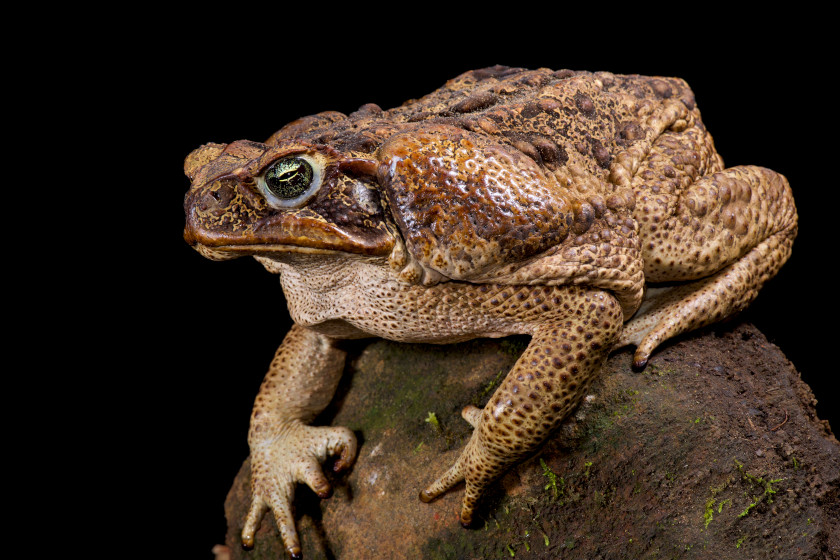
reptiles4all via Getty Images
These toads are highly dangerous. They have two large glands on either side of their heads that secrete a bufotoxin. If a pet bites, licks, or swallows a cane toad, the clock starts ticking immediately, as the poison can kill some pets in as little as 15 minutes. It may cause foaming at the mouth, seizures, drooling, red gums, and a drastic change in behavior. The cane toad's poison is so effective that it's used by indigenous people in South America on their arrows as a fantastic defensive mechanism against predators.
If you pet manages to find a cane toad, you have very little time to waste. The FWC recommends washing the mouth with a hose for ten minutes. This is easier said than done, but it may be the only way to save your pet. Make sure the animal doesn't swallow any of the water. Wipe the animal's gums and tongue with a towel to help wash away any additional poison that may be lingering. Finally, you'll need to get the pet to the vet as soon as possible.
It might sound like overkill to take these precautions, but many veterinarians in Florida have noticed the rise in cases involving the invasive toads and specifically warn pet owners to watch dogs or cats carefully when outdoors if you live in an area that's had toad sightings in the past.
How To Identify and Destroy Cane Toads
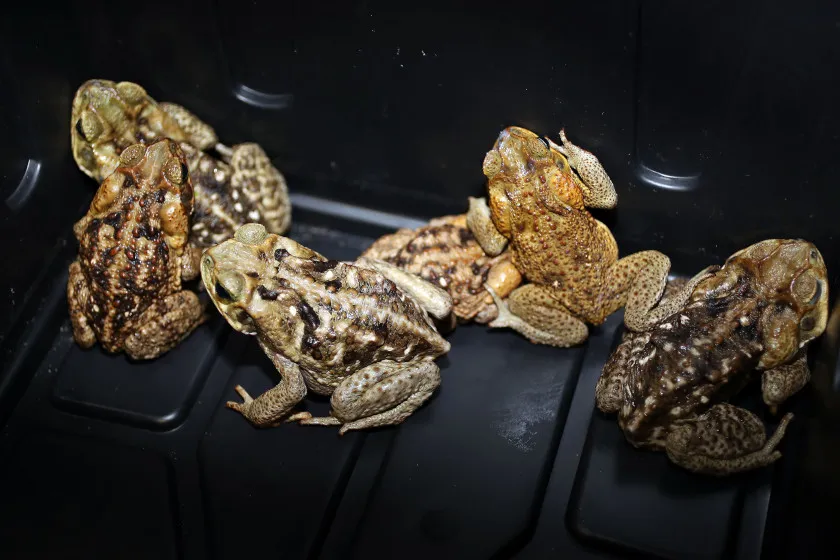
Joe Raedle via Getty Images
Homeowners are going to want to use some caution when they discover a toad in the yard. It's easy to mix up the cane toad with native Southern toads, especially when the animals are younger and roughly the same size. According to the University of Florida's Institute of Food and Agricultural Sciences, cane toads have brown or grayish-brown bodies that are quite stout in nature with warty skin. Some toads will have dark spots and mottled shapes across their back while others do not.
The main difference between the cane toad and the southern toad is the head. Southern toads will often have a ridge that runs across the top of the head between their eyes that cane toads lack. However, cane toads sport distinctive crests that run above the eyes, giving these amphibians a rather grumpy-looking appearance. Also remember to look behind the eye, as there is a large poison gland just above the toad's front arm. If it has a triangular shape, it's probably a cane toad. If it is oval, it's probably a native toad.
Usually, the easiest way to identify a cane toad is based on size alone. Cane toads grow six to nine inches in length. Florida's native toads top out at about three to four inches. Most experts say if you come across a toad larger than four inches, odds are it is a cane toad. The state's other toad and frog species don't really resemble the cane toad in any way, so there's not much worry about mixing them up.
When it comes to disposing of them, there is a specific method recommended by experts that will humanely dispatch them. The City of Naples recommends wearing protective gloves and eyewear to protect yourself from the poison before handling the toad. Once you've captured it, they recommend simply spraying sunscreen with 20 percent benzocaine, or spraying a lidocaine ointment on the back or belly of the animal. This will make them unconscious. From there, they recommend putting the animal in a sealed plastic bag and placing in a freezer for 24 to 48 hours. This will effectively freeze them to death without them knowing it. From there, you can dispose of them appropriately.
As sightings of cane toads seem to increase throughout Florida, it's up to residents to keep a vigilant eye out and help authorities combat these invaders before they can become a worse problem.
For more outdoor content from Travis Smola, be sure to follow him on Twitter and Instagram For original videos, check out his Geocaching and Outdoors with Travis YouTube channels.
